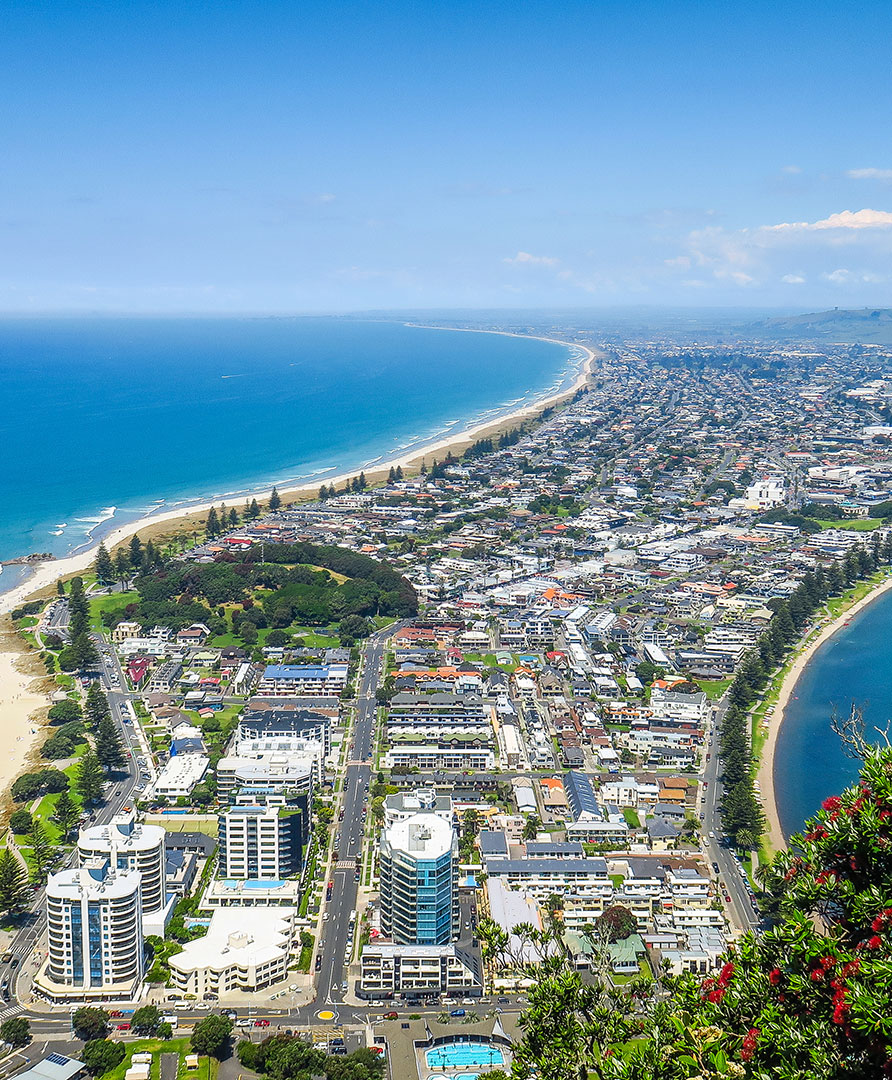Building the Future of Tauranga - Cameron Road Te Papa
Challenge
To develop a detailed business case and concept design for Cameron Road - Stage 2 (17th Avenue to Barkes Corner) that will make it safer for all users and a more attractive urban place, while recognising the cultural heritage and significance of the corridor to mana whenua.
Over the next 30 years, an additional 15,000 people are expected to be living on the Te Papa peninsula. Tauranga needs to transform into a place where more people can live, work, and study.
Cameron Road is one of the city’s main corridors, connecting people in Tauranga’s southern suburbs to the city centre, and plays a vital role in telling the history of the area for the wider community. For mana whenua it is a place linked strongly to tupuna (ancestors) providing an unbreakable connection to the past. Where mahinga kai (food/resource gathering) has sustained whānau for generations.
Moving through to more recent history, institutions including churches, hotels, a medical precinct, schools, parks, tennis club, and war memorial halls all tell a story and provide a connection to place for the community.
Our response
We recognised this project was more than just solving the movement challenges within Tauranga. Rather it was about re-imagining Cameron Road as a place that meets the needs of the present and future communities of Te Papa, while bringing back the cultural layer that has been lost.
To respond to this challenge, we developed an innovative approach that puts the community at the core, ‘Loveable’ and meets Waka Kotahi NZ Transport Agency requirements of a traditional detailed business case.
Our Loveable approach puts ‘place identity’ and ‘people experience’ at the centre of design which is key to connecting tangible elements such as the built environment and infrastructure, to intangible elements like social interactions, daily routines, gathering areas and the uniqueness of local culture. In this way the road is not just seen as somewhere to move through but a vital public space to spend time, celebrate the street life and support local businesses.
Engagement to date has asked the community to consider what they love, what they wish for and what they wonder can be achieved within the corridor. This has prompted the community to think beyond themselves and consider what the future will be like for the next generation.

The impact
Our Loveable Approach is contributing to a more comprehensive understanding of the way the community interact with the road, and a richer understanding of the cultural and historical significance of the corridor.
This intelligence will play a central role in the development of the form and function of Cameron Road – Stage 2 and has informed the development of the investment objectives which include:
 Improving safety outcomes for all users
Improving safety outcomes for all users
 Acknowledging the history of Te Papa, recognising the importance of place
Acknowledging the history of Te Papa, recognising the importance of place
 Reducing reliance on private vehicle travel
Reducing reliance on private vehicle travel
 Supporting growth through competitive, efficient, and reliable access between key origins and destinations
Supporting growth through competitive, efficient, and reliable access between key origins and destinations
 Supporting the proposed growth and land use functions identified in the Te Papa Spatial Plan.
Supporting the proposed growth and land use functions identified in the Te Papa Spatial Plan.
Cameron Road will become more important as a key route to support Tauranga’s transformation, ultimately supporting its sustainable growth.
“GHD’s…Loveable Cities engagement approach… has set the precedence for an interactive, innovative, and fully engaging framework. The Vision workshop with the ‘I Love, I Wish, I Wonder’ methodology received great results. The project virtual room is the first of its kind locally and combined with on-the-ground engagement activities…has really started to involve the local community.”
Brent Goodhue | Senior Project Manager – Transportation | Tauranga City Council

